Nader Hashemi is the director of the Alwaleed Center for Muslim-Christian Understanding and an associate professor of Middle East and Islamic politics at the Edmund A. Walsh School of Foreign Service at Georgetown University. He is also a non-resident fellow at DAWN.
The story of 22-year-old Mahsa Amini, who was killed by Iran's morality police for improperly wearing her hijab, has gone global. No one could have predicted when she left her home in Iran's northern Kurdistan province earlier this month to visit relatives in Tehran that her death would lead to national protests, rocking the Islamic Republic to its core while generating massive international media coverage. The fact that Amini's death occurred during the annual meeting of heads of state at the United Nations helped draw attention to her story, with various leaders at the General Assembly condemning her killing and declaring their support for Iranian protesters.
While the precise timing of the protests in Iran was unpredictable, on closer examination, a societal explosion of this nature should have been expected. That these protests would focus on women's rights and freedoms also should not have been so surprising, given the sequence of events prior to this tumultuous moment that suggested there could be a national outcry in Iran directly linked to the plight of women.
Controlling women's bodies has been a pillar of the Islamic Republic from its inception. After the 1979 revolution, Ayatollah Ruhollah Khomeini and his disciples passed a draconian hijab law, in 1983, that established a new dress code for women in public. While this law has existed ever since, its rigid application has ebbed and flowed for the past 40 years. Reformist governments discouraged the morality police—the Gasht-e Ershad or "Guidance Patrol"—from harassing women, while hard-liners did the opposite, viewing this show of force against women as a non-negotiable principle of Iran's theocratic regime. In 2018, after a woman in Tehran was physically beaten by a police officer for "insufficient hijab," the Chief Justice of Iran, Sadegh Larijani, openly supported the use of physical violence against women. The security forces, he stated, "should not take even one step back."
When Ebrahim Raisi became president last summer, after a patently rigged election, he vowed to step up the enforcement of the hijab law. Harassment, arrests, indictments and prison sentences of women all skyrocketed. This new crackdown has been described by the sociologist Azadeh Kian as the "Talibanization of political power under Raisi." Its antecedents, however, go back several years, in the wide-ranging attempts of Iranian hard-liners to reassert their control over a defiant society that has increasingly rejected their austere values.
While they have targeted state institutions controlled by reformists, hard-liners have made the strict regulation of women's bodies in public a key battleground. In 2018, Iran's Guardian Council officially confirmed the reasons behind disqualifying an elected member of parliament and preventing her from taking her seat: A photo had emerged of Minoo Khaleghi, a reformist candidate from Isfahan, shaking hands with a man. This supposed transgression guaranteed Khaleghi's ineligibility for office. Iran's supreme leader, Ayatollah Ali Khamenei, has been particularly outspoken on this issue. Not shaking hands with members of the opposite sex, Khamenei has insisted, is a "symbol of perseverance" that upholds "the principles of Iranian-Islamic dignity."
Controlling women's bodies has been a pillar of the Islamic Republic from its inception.
- Nader Hashemi
The authorities have also targeted both music and dancing in public by women and girls. After the mayor of Tehran, Mohammad Ali Najafi, attended a public event that included a young female dance troupe throwing rose petals in honor of a female saint, he soon became the ex-mayor, as hard-liners clamored for his resignation. A year later, a video emerged of young schoolgirls dancing to a pop song by U.S.-based Iranian pop singer Sasy Mankan. The video was part of an online "dance challenge" taking place between different schools across Iran. The minister of education, egged on by conservatives, condemned the video. "The enemy is trying different ways to create anxiety among the people including by spreading these disturbing videos," the minister, Mohammad Bathaei, said. He promised to set up a fact-finding committee to investigate the source of the "devious" video clips, which he likened to "some kind of political plot."
Around the same time, female members of the Isfahan National Orchestra were prevented from appearing on stage with their male counterparts, after local officials attached to the Ministry of Culture and Islamic Guidance had intervened. Shahrouz Balouchestani, a female flute player, told the Iranian Labor News Agency that she had performed on stage in Shiraz only two months earlier—when, as at other times in the past, she never had a problem performing in public. Clearly, something had changed. This echoes a similar incident in Isfahan when singer Negar Moazzam performed solo to a group of tourists. Local officials cut her performance short, and she was summoned to appear in court.
Male musicians who collaborate with women have also been targeted. Mehdi Rajabian, a prominent musician and composer, was sentenced to six years in jail after a three-minute trial. Authorities were angered by the fact that he insisted on working with women; the judge told him he was "encouraging prostitution." Yet Rajabian emerged from prison defiant. "Even if I go to prison hundreds of times, I need female singing in my project, I need female dance," he said in 2020. "Whenever I feel the need to produce this music, I will definitely produce it. I do not censor myself."
This reactionary campaign against women has also been extended to school textbooks. In 2020, the Ministry of Education removed images of little girls from the cover of a third-grade math textbook, which had displayed a cartoon image of boys and girls under a tree studying math. After widespread criticism, when asked to explain the change, the ministry spokesman said, "the previous image [on the textbook] was too crowded." Left unexplained was why, in the apparent interest of space, the image of boys was not removed instead of the girls.
Iran's diplomatic missions abroad have also been affected by the country's creeping Talibanization. Earlier this year, the Iranian ambassador to the United Kingdom, Mohsen Baharvand, was sacked after a video emerged of a reception at the Iranian Embassy in London that included women who did not have their heads covered. Conservative newspapers in Iran gave the story prominent attention, including the image of a woman playing the piano alongside a violinist who wasn't wearing the hijab.
These stories are all part of a larger trend to curtail and roll back the already heavily restricted rights of women in Iran, under the Islamic Republic's deeply misogynist laws. In late 2021, a new law was passed severely restricting access to abortion, contraception and voluntary sterilization services—"in direct violation of women's human rights under international law," as U.N. human rights experts warned. Women have continually been barred from sporting events, part of a long-running government obsession "to go to great lengths to enforce their discriminatory and cruel ban on women attending football stadiums," as Tara Sepehri Far of Human Rights Watch said. The chief prosecutor in Isfahan announced in 2019 that it was illegal and "un-Islamic" for women to ride bicycles in public. Male hairdressers have been banned from serving female clients. Even women's Zumba aerobic classes have been prohibited, with the head of public sports in Iran banning the Colombian dance-inspired fitness craze "and any harmonious movement or body shaking instruction."
A societal explosion of this nature should have been expected. The sequence of events prior to Mahsa Amini's death suggested there could be a national outcry in Iran directly linked to the plight of women.
- Nader Hashemi
But Iranian women have been fighting back through various acts of civil disobedience, including resisting the mandatory hijab law. In December 2017, 32-year-old Vida Movahed stood on a utility box in downtown Tehran, took off her hijab and waved it in the air. Her protest, which was filmed, went viral. Many copycat protests soon followed, including from conservative women who believe the hijab should be optional. In the 18 months that followed Vida's initial protest, at least 32 Iranian women were arrested and four were prosecuted, including Vida, who was given a one-year sentence. She repeated her protest in October 2018 and was sent back to jail.
Iranian authorities responded to these protests with paranoia. Men who publicly opposed the compulsory hijab were prosecuted. In January 2019, Reza Khandan and Farhad Meysami, two human rights activists, were given six-year prison sentences for expressing solidarity with hijab protesters. "Iran wants to silence these men by jailing them for standing by women who want the hijab to be a choice, not a requirement," said Hadi Ghaemi, the executive director of the Center for Human Rights in Iran. "The only crime they committed is peacefully exercising their rights of freedom of speech and expression."
The intensified crackdown on women defying the hijab law set off an internal debate among Iranian conservatives. Abdolhadi Mar'ashi, an influential cleric in Mashhad, quit his position in protest over the behavior of the morality police. "Our understanding of what is right and what is wrong under Islam has been limited only to the hijab," he wrote in his resignation letter. He questioned the disproportionate focus on women's dress as opposed to "government corruption, social justice, economic security, class disparity, drug addiction, national poverty, [and] freedom of expression." Jalal Rashidi Koochi, a member of parliament, weighed in by stating that the morality police "haven't made anyone observe the hijab," suggesting their repression had backfired. Even former conservative President Mahmoud Ahmadinejad, in a video produced this week, criticized the state-sanctioned wearing of the hijab, suggesting such repressive policies are "destroying the country, destroying the people and destroying the truth."
A month and half before Mahsa Amini was killed, her death was prefigured when a 28-year-old woman named Sepideh Rashno appeared on Iranian state television, to apologize for opposing the hijab law. A few weeks earlier, a video had surfaced of Rashno, a writer and artist, on a bus in Tehran arguing with another woman over the hijab; it went viral. Following her public "confession," though, it emerged that Rashno had reportedly been beaten and hospitalized for internal injuries before making the statements that aired on state television. A protest letter signed by over 1,000 Iranian citizens and civil society activists, invoking Rashno's case, protested "four decades of oppression of Iranian women," declaring that "liberation is our right, and our strength is in our banding together."
It is these events that put women's rights at the center of the current protests in Iran. Amini's killing in police custody was the last straw. One of the ironies of the Islamic Republic is that notwithstanding its highly patriarchal nature and misogyny, the regime did heavily invest in female education, albeit not equitably. By 2001, women accounted for over 60 percent of admissions into Iranian universities. Inadvertently, the foundations for a feminist movement were laid in a way that Iran's clerical leaders likely now regret. "Women, life, freedom!" is one of most popular slogans on the streets of Iran today, and for very good reasons. These demands will not go away, nor will they easily be snuffed out.
Iran's human rights and democracy movement includes many women. Most of them have spent time in jail; many have been torn from their children; a few have been forced into exile; others have died. A short but not exhaustive list would include Shirin Ebadi, Nasrin Setoudeh, Shadi Sadr, Narges Mohammadi, Mehrangiz Kar, Zahra Rahnavard, Sepideh Qolian, Atena Daemi, Neda Agha Soltan and, now, Mahsa Amini.
Forty-three years ago, in the months after the 1979 revolution, there was a brief political opening in Iran. The Shah, the longstanding U.S.-backed dictator, had been toppled, and Khomeini's Islamist devotees had yet to consolidate their power. The press was suddenly (and temporarily) free, and Iranians were openly debating the future of their country. At this time, a banner appeared near the University of Tehran, which read: "The measure of a free society is the measure of women's freedom in that society." This statement is still as true today as it was back then, even though the Islamic Republic has tried to silence its message through repressive policies like the hijab law. The future of this proposition, and the promise of that banner years ago, are now being contested in provinces, cities and towns across Iran.









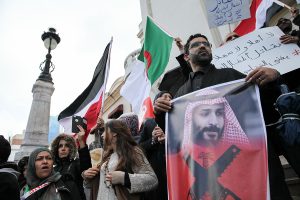
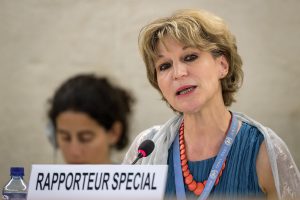


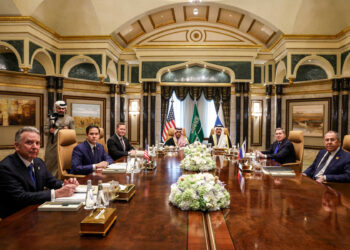

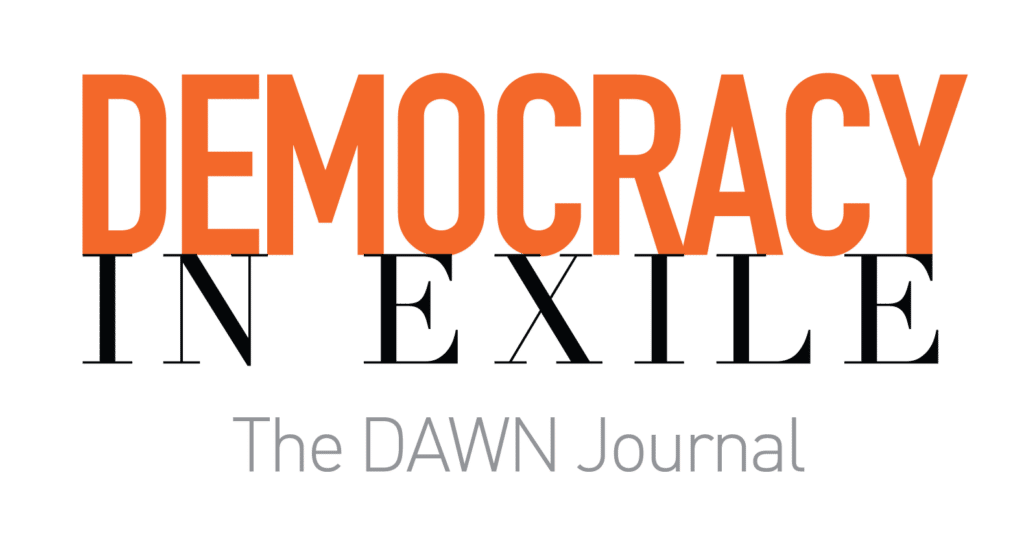





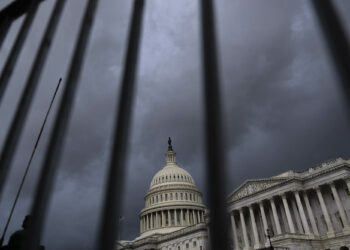












![Security forces loyal to the interim Syrian government stand guard at a checkpoint previously held by supporters of deposed president Bashar al-Assad, in the town of Hmeimim, in the coastal province of Latakia, on March 11, 2025. Syria's new authorities announced on March 10, the end of an operation against loyalists of deposed president Bashar al-Assad, after a war monitor reported more than 1,000 civilians killed in the worst violence since his overthrow. The Syrian Observatory for Human Rights said the overwhelming majority of the 1,068 civilians killed since March 6, were members of the Alawite minority who were executed by the security forces or allied groups. (Photo by OMAR HAJ KADOUR / AFP) / “The erroneous mention[s] appearing in the metadata of this photo by OMAR HAJ KADOUR has been modified in AFP systems in the following manner: [Hmeimim] instead of [Ayn Shiqaq]. Please immediately remove the erroneous mention[s] from all your online services and delete it (them) from your servers. If you have been authorized by AFP to distribute it (them) to third parties, please ensure that the same actions are carried out by them. Failure to promptly comply with these instructions will entail liability on your part for any continued or post notification usage. Therefore we thank you very much for all your attention and prompt action. We are sorry for the inconvenience this notification may cause and remain at your disposal for any further information you may require.”](https://dawnmena.org/wp-content/uploads/2025/04/syria-22039885951-360x180.jpg)




